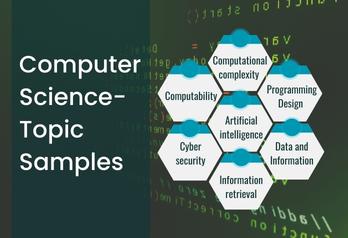Topic - 1: Intrusion of Social Engineering Attacks In Social Media Platform Using NLP
As information security approaches advance, social engineering attacks have become more popular because they target human defects that are harder to prevent automatically. The term "social engineering" refers to a wide range of subversive activities that take place through human interactions. It manipulates users' brains in order to cause them to make security mistakes or divulge sensitive information. In social engineering assaults, one or more stages are incorporated. To carry out the attack, the attacker gathers background information about the target victim, such as possible avenues of entry and weak security measures (Sawa, Bhakta, Harris, & Hadnagy, 2016). We propose a method for identifying a social engineering attack that relies on natural language analysis to identify the intruder's suspicious statements.
In social engineering attacks, questions demanding personal information or commands directing the listener to perform actions that the speaker is not authorised to perform are employed. The assaults include questions asking private information or commands directing the recipient to conduct actions that the speaker is not authorised to perform (Banu et al., 2019). To see if an inquiry or order is malicious, each extracted subject is compared to a topic blacklist. Cyber-criminals are always on the lookout for the weakest link in a computer system's defence. All of the system's defences can be bypassed once a user provides a login or other sensitive information. Fraudsters utilise social engineering as a new type of trust scam (Edwards, Larson, Green, Rashid, & Baron, 2017). Natural Language Processing will be utilised in this research to detect internet social engineering attacks and intrusions (Aggarwal, Kumar, & Sudarsan, 2014).

Topic - 2: Detecting fake news in Social Media using NLP
Social media makes it simpler and more accessible to connect and communicate with others, improving the quality of interpersonal interactions. However, the quality of interpersonal relationships is under jeopardy. People have made social media programmes important to their lives because of the internet's integration into daily life. With advancements in technology, the world has become a domestic world where people can easily contact with anyone from anywhere (Kong, Tan, Gan, & Samsudin, 2020).
Interaction with strangers around the world has made it simpler for hackers to obtain people's personal information, leading to crimes. As a result, when people rely extensively on social media and allow it to dictate communication, it has a substantial impact on interpersonal connections that can be detrimental. Misunderstandings and rumours can arise as a result of the dissemination of inaccurate information and fake news (de Oliveira, Pisa, Lopez, de Medeiros, & Mattos, 2021). The deep learning-based strategy for detecting deceptive fake news has focused on online review and public posting via social media utilising natural language processing (NLP).
Topic - 3: Sentiment Analysis to extract data from Patient’s Feedback
The internet has a large amount of unstructured data available due to an everincreasing number of users. People on the internet use their opinions to communicate their emotions and sentiments. Patients use the internet to submit input on a variety of topics, including hospitals, doctors, medications, and treatment choices. Health-care professionals can use patient data to improve the quality of their services. Other patients will be able to utilise this information to locate the most appropriate health care facility in their area. The great bulk of internet information is in text format (Nawab, Ramsey, & Schreiber, 2020).
Traditional approaches struggle to extract useful information from this material due to its unstructured nature. To examine this vast volume of data, new approaches and procedures are needed. Sentiment analysis is a field that takes people's opinions as input, pre-processes them, and analyses them using machine-learning approaches. It also aids in building on prior NLP-based patient feedback research and doing a comprehensive analysis of numerous aspects of patient feedback (Fairie et al., 2021). Hence this helps to understand the patient concerns including areas whether a health care organization is performing well and the areas where opportunities for improvement exist.
- Intrusion of Social Engineering Attacks In Social Media Platform Using NLP
- Detecting fake news in Social Media using NLP
- Sentiment Analysis to extract data from Patient’s Feedback
References
- Aggarwal, S., Kumar, V., & Sudarsan, S. D. (2014). Identification and Detection of Phishing Emails Using Natural Language Processing Techniques. Proceedings of the 7th International Conference on Security of Information and Networks - SIN ’14, 217–222. New York, New York, USA: ACM Press. https://doi.org/10.1145/2659651.2659691
- Banu, R., M., A., Kamath C., A., S., A., Ujwala, H. S., & S.N., H. (2019). Detecting Phishing Attacks Using Natural Language Processing And Machine Learning. 2019 International Conference on Intelligent Computing and Control Systems (ICCS), 1210–1214. IEEE. https://doi.org/10.1109/ICCS45141.2019.9065490
- de Oliveira, N. R., Pisa, P. S., Lopez, M. A., de Medeiros, D. S. V., & Mattos, D. M. F. (2021). Identifying Fake News on Social Networks Based on Natural Language Processing: Trends and Challenges. Information, 12(1), 38. https://doi.org/10.3390/info12010038
- Edwards, M., Larson, R., Green, B., Rashid, A., & Baron, A. (2017). Panning for gold: Automatically analysing online social engineering attack surfaces. Computers & Security, 69, 18–34. https://doi.org/10.1016/j.cose.2016.12.013
- Fairie, P., Zhang, Z., D’Souza, A. G., Walsh, T., Quan, H., & Santana, M. J. (2021). Categorising patient concerns using natural language processing techniques. BMJ Health & Care Informatics, 28(1), e100274. https://doi.org/10.1136/bmjhci-2020-100274
- Kong, S. H., Tan, L. M., Gan, K. H., & Samsudin, N. H. (2020). Fake News Detection using Deep Learning. 2020 IEEE 10th Symposium on Computer Applications & Industrial Electronics (ISCAIE), 102–107. IEEE. https://doi.org/10.1109/ISCAIE47305.2020.9108841
- Nawab, K., Ramsey, G., & Schreiber, R. (2020). Natural Language Processing to Extract Meaningful Information from Patient Experience Feedback. Applied Clinical Informatics, 11(02), 242–252. https://doi.org/10.1055/s-0040-1708049
- Sawa, Y., Bhakta, R., Harris, I. G., & Hadnagy, C. (2016). Detection of Social Engineering Attacks Through Natural Language Processing of Conversations. 2016 IEEE Tenth International Conference on Semantic Computing (ICSC), 262–265. IEEE


